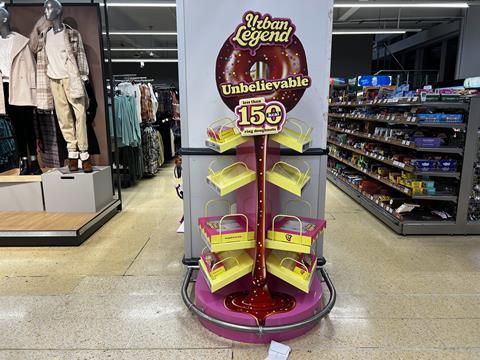
The new HFSS laws make up the most dramatic piece of legislation any of us dared imagine.
Anything that features a mathematical equation to adjudicate where you can display ‘evil’ products shows how wrong we have gone. Still, retailers have got on with the job and changed their layouts for the new legislation – working around the clock while consultations and drafts were issued during the chaos of the pandemic, amid a lack of clarity over what would be in or out of scope.
In May Boris Johnson’s government delayed the multibuy ban on HFSS foods – despite this making more sense to reduce obesity than the location of products – and Liz Truss’s government threatened to go further and abolish the legislation entirely. It was not to be.
Business plans went up in smoke (multibuys are allowed now, but Tesco and Sainsbury’s have stopped them anyway), leading to questions over how to extract commercial income. How can you condense several different secondary space locations for confectionery into a single aisle, with signage?
In terms of execution, we have seen similar tactics from retailers based around changing gondola ends to ‘flat ends’ and sticking the gondola in a hotspot, just inside the aisle, complete with a ‘goalpost’ sign to advertise offers. It’s a movement of centimetres to satisfy the rules.
Digital displays have come to the forefront, again a useful commercial income driver, but the execution remains questionable. Retailers need reminding they can share messages in different ways, not just simply replicate what would have been on the cardboard.
The legislation will mean front-of-store sales take a significant hit, and in the past, numerous stores have used this space with palletised ‘one touch’ replenishment. Despite the incoming legislation, we still saw Sainsbury’s displaying tubs of sweets last week, which surprised me. I assumed retailers would have drawn a line in the sand to ensure compliance well ahead of time.
Equally, stores have had to consider their ‘main customer route’ through the store and can utilise back-aisle ends for HFSS products, if a barrier means it’s not a complete aisle. That barrier could be a wall at the start of the aisle, or a counter that flows around to an aisle itself, for example.
Convenience stores are clobbered with the legislation. Many are landlocked and don’t have space to easily move bays of products.
It borders on the absurd, therefore, that the promotional bay in my local Tesco Express is actually made more prominent now – the former location, whilst on an end, was easily missed near the checkout area.
Enforcement will be difficult. Trading Standards is not blessed with time or resources, and we’re all floundering trying to understand what is and isn’t in scope, and where the exceptions are.
The changes proposed by Scotland and Wales potentially look more concrete (such as shippers being prohibited entirely in Wales). But the absence of alcohol, a driver of so many health problems and wider societal issues, from any regulation in England remains baffling.
Whilst I have some sympathy with the argument that it is difficult to nutritionally score products, being able to locate store-baked mince pies at the front of store, but not the mince pies that were baked elsewhere, will baffle customers.
Whatever happens, it remains an unclear picture – especially as the PM says she isn’t interested in telling people what they can and can’t have in a two for one deal. What’s the end game? Will a lack of Easter eggs at the front of stores make a difference to the nation’s health, or just a huge difference to retail operations?



















No comments yet